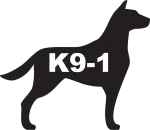Dog Training World › Forums › Specialized Dog Training › Search and Rescue › Search and rescue training – is it worth doing recreationally? › Reply To: Search and rescue training – is it worth doing recreationally?
-
Hi, I don’t have a lot of videos, just a few snippets from marking. The dog works independently, and during training the handler usually stands still and waits, or along the path. At later stages, a man also searches the area, but it is rather difficult to record a dog during work, because it just runs, often far away and is not in the field of view.
The marking itself is posted below, my dogs mark by barking, they do not lead the guide. I will also look for videos on the web that will show the work in more detail, I will post and describe it.
The helper can be hidden from the dog in 4 ways: it is accessible to the dog (physical accessibility) and visible, it can be physically accessible but invisible (e.g. hidden under a blanket, etc.), it can be inaccessible and visible (e.g. high up or down – the dog can see, but has no possibility of physical contact), and can be invisible and inaccessible.
The dog should not make physical contact with the helper – this is forbidden and should not break the hiding place, e.g. pull out sticks if the helper is covered with them. The reason is safety – avoiding potential bites and the safety of the rescue dog – missing people are usually sick people or those who do not want to be found (e.g. suicidal, unbalanced people, etc.). Attempts to dismantle hiding places are excluded due to working conditions, e.g. rubble may slide on rubble and the dog and rescuers may die – such conditions may also occur in field searches.
Here is in train searching – the helper is accessible to the dog and visible. The first dog is my Czkekan – Polish hound, the second dog is my friend’s Polish hunting dog – Bora. Bora is just learning to mark by barking, so she is rewarded by the helper for each bark.
https://www.youtube.com/watch?v=p2T4ijiketg

